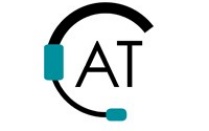Steps 3.1 through 3.9
Key question to answer in Activity Stage 3: What do we need to know in order to fully address the role of the new or improved technology-based capability within the envisioned free Software application or DIY instructions?
To view supporting evidence, click on magnifying glass icons or hyperlink text.
Click on the toolbox icon to view tools related to each step.
Click on table icon to view subcategories of Freeware.
Step 3.1
Project team identifies specific fundamental scientific and technical knowledge required to plan, implement and conduct envisioned project.
Note: Not every project requires original research — many would do quite well going straight to the engineering development phase. However, many sponsors premise their funding on the requirement for original research — and in many cases this requirement overshadows consideration of downstream development and commercialization activities, so Investigators either want or need to justify time, effort and funding for research.
Step 3.2
Identify fields of expertise — and individual experts — capable of providing required knowledge. Opportunity for Knowledge Translation intake: Create a Secondary Research plan to identify, acquire, translate, absorb and apply existing science-based knowledge necessary to successfully complete the envisioned work. Then, as necessary to fill critical knowledge gaps, create a Primary Research plan to generate that new to the world knowledge.
Step 3.3
Select appropriate research designs (i.e., systematic or scoping review, action research, grounded theory, clinical research), for conducting Secondary Archival Research and for conducting Primary Scientific Research.
Step 3.4
If Primary Scientific Research is deemed necessary, then prepare/submit proposals and secure funding from appropriate sponsor. If Secondary Archival Research provides all the necessary knowledge, skip Steps 3.5 — 3.7 and go directly to Step 3.8.
By following the NtK Model through to Step 3.4, the PI's will have accumulated the necessary evidence to propose a valid solutions to a verified problem, in the context of existing technical, market and consumer knowledge. Projects proposed, reviewed and funded without this foundation typically fail.
Step 3.5
Once funding is obtained, conduct required Primary Scientific Research by implementing the selected methodologies to generate new knowledge.
Step 3.6
Monitor and track quality of Primary Scientific Research process and results.
Step 3.7
Refine process as necessary to optimize quality (rigor and relevance) of results from original scientific research study.
Step 3.8
Compile results from Secondary Archival Research and Primary Scientific Research, and perform analyses to integrate findings into project plan.
Step 3.9
Draw Conclusions — evaluate discovery state knowledge in light of proposed solution to stated problem. Before proceeding to Decision Gate 3, ensure project team has obtained all the scientific knowledge required to initiate the project's Invention Phase (commence Engineering Development), and to address the anticipated barriers to progress. Reserve the option to return to the Research Phase (Stages, 1, 2 or 3) if new requirements for Conceptual Discoveries arise during the Invention or Innovation phases.
NOTE: Reserve the option to return to the Research Phase (Stages, 1, 2 or 3) if new requirements for Conceptual Discoveries arise during Invention or Innovation phases. Recognize that such iterations will impact time frames for entire project and will delay deliverables.
Decision Gate 3
Is the Project Team qualified to puruse the downstream requirements? If so, are they prepared to commit the time and effort necessary to complete the downstream requirements for the Invention Phase and Innovation Phase? If not the team lacks the required expertise, commitment or prior commitment, what lessons can be drawn from completed work and shared with others qualified to continue? Determine if the Discovery Phase reaffirmed the potential for the envisioned solution to address the validated problem. If so, either continue project into the Invention Phase (Stages 4 — 6), or identify appropriate partner to initiate those activities. If neither option is viable terminate project and implement Knowledge Translation Opportunity to effectively communicate the project's Conceptual Discovery to all relevant stakeholders.



















